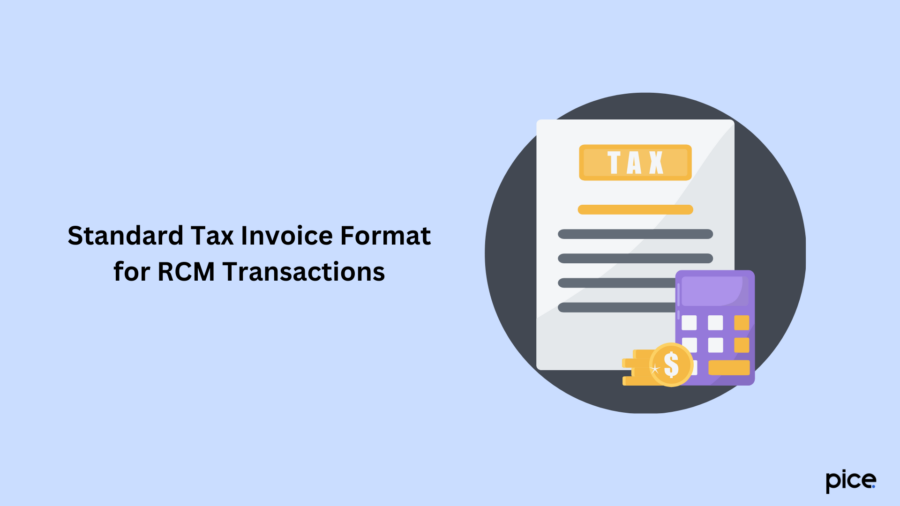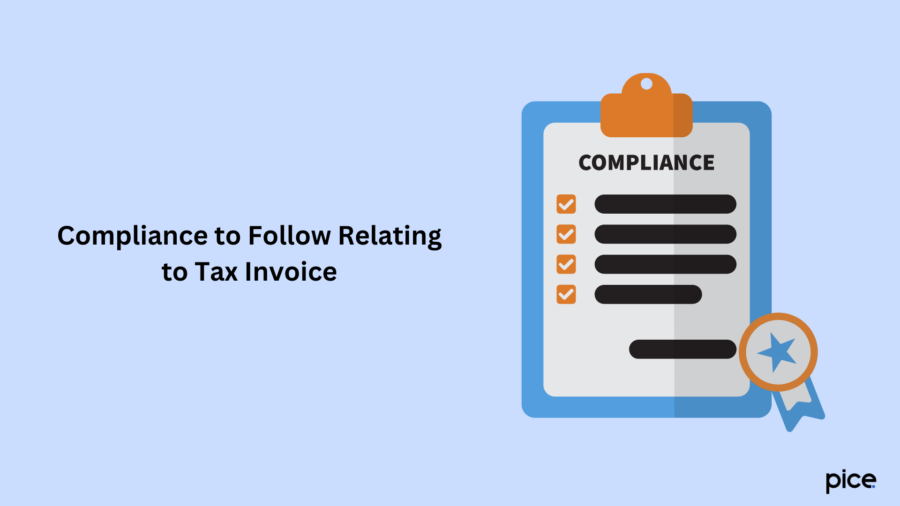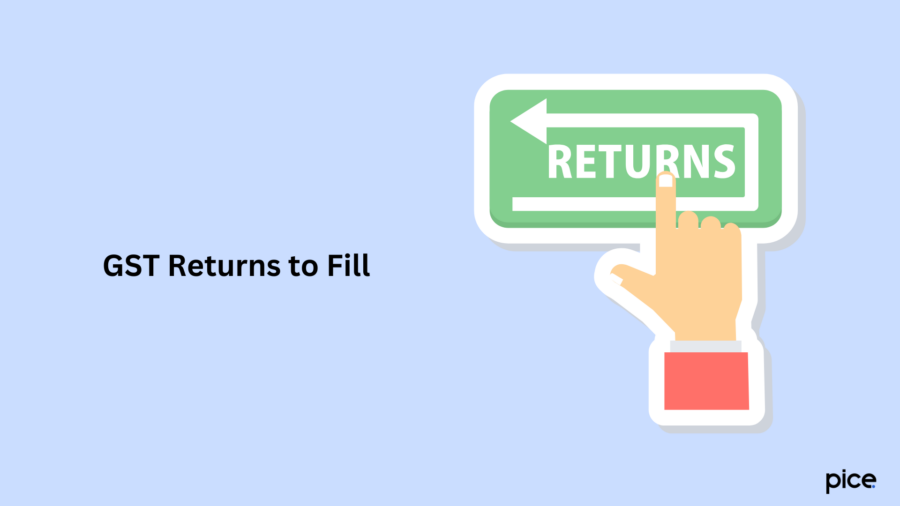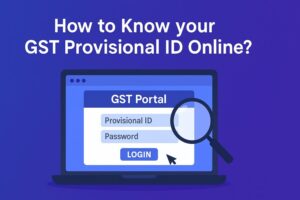RCM Invoice Format Under GST
- 6 Nov 24
- 10 mins

RCM Invoice Format Under GST
- Standard Tax Invoice Format for RCM Transactions
- Compliance with Tax Authority Guidelines
- Accurate and Complete Invoice Information
- Proper Invoice Numbering and Sequencing
- Maintaining Invoice Records for Audit Purposes
- A Brief on the Reverse Charge Mechanism
- GST Returns to Fill
- Registration Rules Under RCM
- Who Should Pay GST Under RCM?
- Conclusion
Key Takeaways
- Recipient’s Tax Liability: Under RCM, the recipient, not the supplier, pays GST on transactions.
- Mandatory Invoice Details: Include GSTIN, HSN/SAC codes, and tax payable on RCM invoices.
- Avoid Penalties with Accuracy: Accurate RCM invoices help prevent fines and ensure GST compliance.
- Tax Types by Location: Use CGST/SGST for intrastate and IGST for interstate RCM transactions.
- ITC Eligibility: Recipients can claim ITC for RCM GST on business-related goods and services.
RCM invoice format under GST differs from that of a normal invoice format. The Reverse Charge Mechanism (RCM) reduces the GST liability and tax compliance burden on suppliers. However, it necessitates the recipient or purchaser to pay GST for the goods and services purchased.
Learn about the format of preparing a GST invoice under RCM in this comprehensive guide.
Standard Tax Invoice Format for RCM Transactions

A GST invoice needs to include details of transactions, GST amount, input tax and output tax. Business owners with GST registration need to provide GST invoices to their customers based on business operations. Reverse Charge Mechanism invoices need to include the appropriate recipient name, GST number and additional information related to RCM.
Here are the key details that should be included in every RCM invoice format:
- Suppliers’ name and address
- GSTIN number of the supplier
- Invoice number, date of transaction and transaction details
- Name and address of the recipient of goods and services
- GSTIN number of the recipient
- The type of service rendered or goods supplied
- Unit or quantity of products sold and purchased
- HSN or SAC code of the goods and services
- Rate of tax and accurate calculation of taxable value
- The amount payable by the recipient
- Signature of the authorised person
Compliance with Tax Authority Guidelines
Individuals and enterprises adhering to GST rules need to comply with the regulations set by the GST Council. You can maintain accurate GST invoice formats by following the given below rules:
- GST invoice raising rules
- Rules about specifying details of purchases and sales
- The procedure to file tax returns
Based on a company's regulatory compliance with tax laws, the government allots a score to every business. This helps other organisations check the company's compliance with the tax authority by paying applicable tax on supply. Further, to comply with the rules, businesses should check updates relating to tax compliance. The council categorises compliance rules into three groups as follows:
Compliance Related to GST Registration
The first rule for GST compliance mandates GST registration for taxpayers. You need to log in to the official GST website to complete the registration process. Based on your annual turnover, the GST registration process differs.
Compliance to Follow Relating to Tax Invoice

Compliance with tax invoices is essential for businesses to get an input tax credit (ITC). The first step of compliance requires the creation of a pro forma invoice including the following details:
- Invoice number and date
- Buyer’s name
- Delivery and billing address
- GSTIN of the Party
- Destination: the supply
- HSN code (Harmonized System of Nomenclature) or SAC Code (Services Accounting Code)
- Description, type of goods, quantity, number of units and total worth
- Applicable tax rate
- Taxable amount and any discount, if applicable
- If a reverse charge applies to the goods and services
- Signature of the dealer
In case businesses fail to mention proper description of items in the GST invoice, the following penalties apply:
- For non-issuance of tax invoices a penalty of ₹10,000 or 100% of the tax amount, whichever is higher
- For incorrect invoicing, organisations have to pay ₹25,000
Compliance Relating to GST Return
Businesses having GST registration need to file GST returns online within a specific time period based on the business activity. The time frame for filing GST returns for businesses varies in the following ways:
- Monthly
- Quarterly
- Yearly
Accurate and Complete Invoice Information
An invoice prepared under the reverse charge mechanism needs to be filled in with accuracy. Details such as name, address, GSTIN number, types of goods supplied, tax rate and total taxable amount need to be accurate.
Ensuring accuracy helps companies adhere to GST rules. It further helps avoid duplicate payments or overpayment reducing risks of fraud and tax complications.
Proper Invoice Numbering and Sequencing
It is essential to maintain proper invoice numbering and sequence. Here are the practices to maintain invoice numbering:
- Your invoice number should start with 01 or 001
- After the accurate invoice number, you can add the date or month
- You should maintain the same sequence in all invoices
Maintaining Invoice Records for Audit Purposes
You need to maintain invoices for audit purposes in the following way:
- You need to update the information such as essential invoice elements while maintaining the invoice for audit purposes.
- All receipts and payments in RCM invoices need to be filed weekly or biweekly.
- Categorising GST-compliant invoices monthly or yearly is essential.
- In case you have software for the processing of invoices, you need to have a backup of the software at regular intervals for long-term accessibility.
- Maintaining records of professional invoices needs to be followed by sequential maintenance of regular invoices.
A Brief on the Reverse Charge Mechanism
The reverse charge mechanism is a pattern of goods and services tax in India wherein the recipient of goods and services needs to pay GST. In accordance with the GST rules, the supplier does not need to pay tax for the concerned goods and services.
Applicability of RCM
The reverse charge mechanism applies to an intra-state transaction wherein there is a supply or deal between an unregistered supplier and a registered person. It is applicable under Sections 9(3), 9(4) and 9(5) of the Central GST (CGST) and State GST (SGST) Act.
A supplier needs to mention the transactions related to RCM in Table 3D of GST return-1. However, the recipient of goods and services needs to mention the details of transactions associated with RCM in the invoice in GST ANX-1. After the recipient fills in the details, the information will auto-populate in Table 3B of the GST Return-1.
Supply of Goods and Services from Unregistered to Registered Dealer
Section 9(4) of the CGST Act highlights the GST Council’s rules wherein a reverse charge applies when there is a supply of goods and services between an unregistered person and a registered dealer. The recipient needs to pay GST instead of the supplier by creating a self-invoice for the transactions.
In addition, if it is an intra-state purchase, the receiver of goods and services needs to pay both CGST and SGST on a reverse charge basis. However, if these are inter-state transactions, the buyer needs to pay IGST (integrated GST).
Supply of Goods and Services Via an E-commerce Operator
Businesses often use e-commerce portals to sell different goods and services. These transactions attract GST under Section 9(5) of the CGST Act. In other words, it attracts a reverse charge if the dealer deals in various types of goods and services using the e-commerce portal.
Supply of Certain Goods and Services Specified by CBIC
Under Section 9(3) of the CGST Act, the CBIC (Central Board of Indirect Taxes and Customs) issued a list of specified goods and services. This list includes goods such as cashew nuts and tobacco leaves, and services like goods transport agency services, services by an individual advocate and others. These goods and services attract a reverse charge.
GST Returns to Fill

Here are the types of GST returns available online:
GSTR-1:
Businesses that do not need to pay taxes to the government, need to file GSTR-1. Once companies file this form, they will not need to pay any tax thereafter.
GSTR-3B:
GSTR 3B mentions the outward supplies undertaken by a business during a tax period. This form helps a company declare their GST liabilities. Based on the summary of GSTR-3B, the calculator of tax liability is carried out and the business can claim input tax liability.
GSTR-9:
If the annual aggregate turnover of a taxpayer exceeds ₹2 crore in a financial year, he/she needs to file GSTR-9. Taxpayers need to mention the details of outward taxable supplies and file GSTR-9 annually. Additionally, it should mention the details of inbound supplies during the same financial year.
The aforesaid factors help calculate the tax-payable amount. Thus, GSTR 9 is the consolidated form of GSTR-1, GSTR-2A and GSTR-3B.
Registration Rules Under RCM
GST registration is mandatory for a person liable to pay GST under the reverse charge mechanism under Section 24 of the CGST Act, 2017. As a result, the threshold limits of ₹20 lakhs and ₹40 lakhs will not apply in such cases.
Who Should Pay GST Under RCM?
RCM is payable by the recipient of goods and services. However, the supplier needs to mention in the invoice the types of transactions, or in other words, if the tax is payable under the reverse charge mechanism when they share invoices with the purchaser. Here are the crucial points to remember while paying GST under RCM:
- The recipient of goods and services can claim an Input Tax Credit (ITC) under RCM if the goods and services are used for the furtherance of business or other business purposes.
- A composition dealer needs to pay tax at the normal rate and not the composition rate under RCM. However, they cannot avail ITC of the tax paid.
- GST compensation cess applies to the tax payable or paid under RCM.
Conclusion
RCM invoice format under GST mandates paying CGST and SGST for intrastate transactions. Further, it mandates paying IGST for interstate transactions. Purchasers need to pay GST under the reverse charge transactions to comply with the GST rules.
It helps them avoid penalties for delayed GST payments or incorrect invoices, thereby complying with the GST laws.
💡If you want to streamline your payment and make GST payments, consider using the PICE App. Explore the PICE App today and take your business to new heights.
 By
By 

















